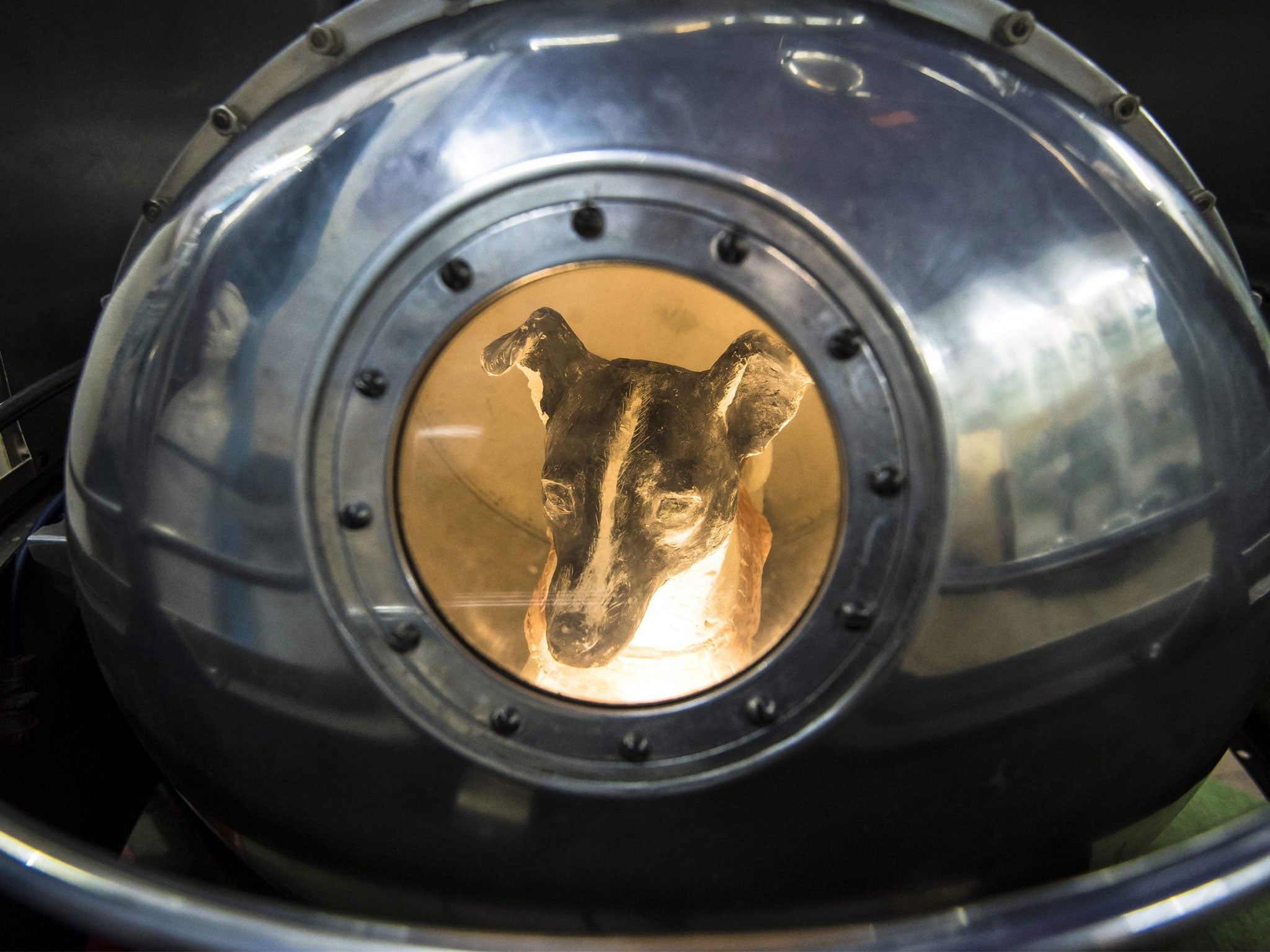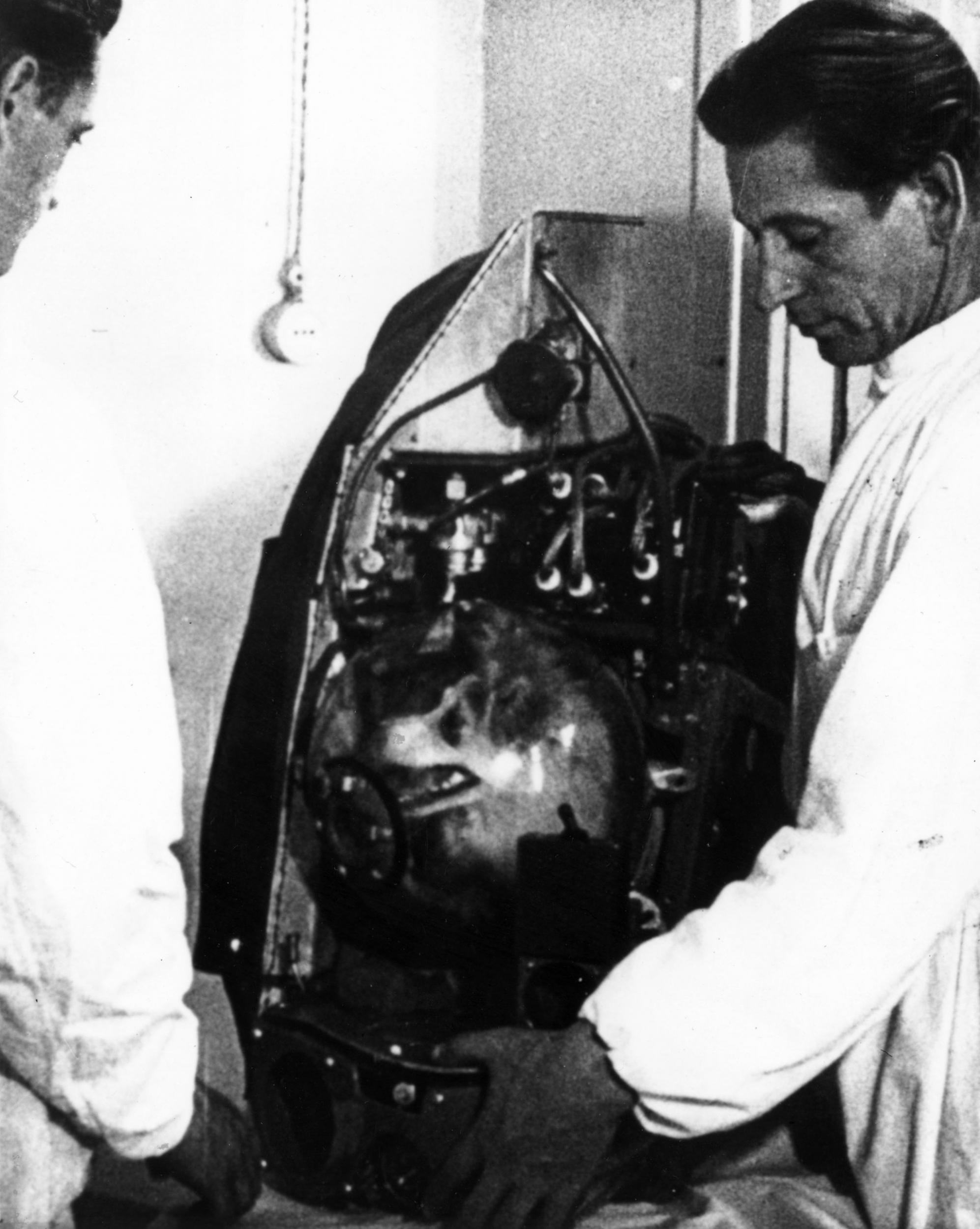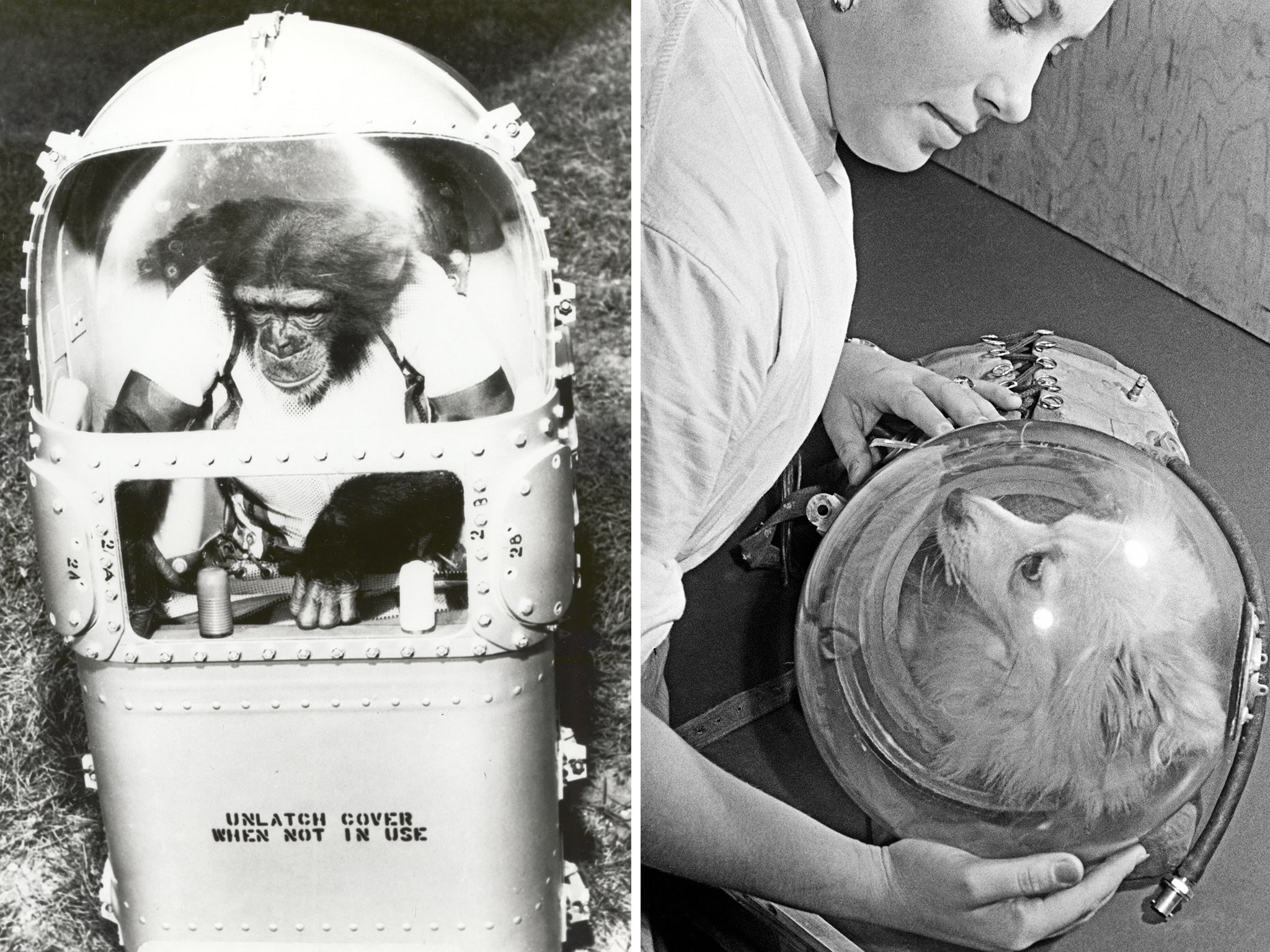Laika at 60: What happens to all the dogs, monkeys and mice sent into space?
Stray dog sent into space in 1957 was first living creature to orbit Earth

Your support helps us to tell the story
From reproductive rights to climate change to Big Tech, The Independent is on the ground when the story is developing. Whether it's investigating the financials of Elon Musk's pro-Trump PAC or producing our latest documentary, 'The A Word', which shines a light on the American women fighting for reproductive rights, we know how important it is to parse out the facts from the messaging.
At such a critical moment in US history, we need reporters on the ground. Your donation allows us to keep sending journalists to speak to both sides of the story.
The Independent is trusted by Americans across the entire political spectrum. And unlike many other quality news outlets, we choose not to lock Americans out of our reporting and analysis with paywalls. We believe quality journalism should be available to everyone, paid for by those who can afford it.
Your support makes all the difference.Laika’s last moments on earth were spent strapped into a windowless Soviet rocket awaiting lift off.
The stray dog had enjoyed a meteoric rise to fame in 1957, having been plucked from a Moscow street, hastily trained and blasted into space.
That ill-fated mission resulted in Laika overheating and dying five hours into the flight.
But Sputnik 2’s launch – 60 years ago, today – was a defining moment in the history of space exploration; only the second time a spacecraft had been launched into Earth’s orbit, and the first time a living creature had been on board.
While Laika may have been a trailblazer in orbiting the Earth, animals were being employed in the name of space exploration more than a decade earlier.
Russian and American scientists have long used animals to test the limits of their ability to send living organisms into space – and return them unharmed.
The first sent into outer space were fruit flies blasted to an altitude of 68 miles inside a re-fashioned Nazi V2 rocket in 1947.
In the years that followed, Nasa sent several monkeys, named Albert I, II, III, IV, into space attached to monitoring instruments. All of them died.

It was not until the flight of a monkey named Yorick (accompanied by 11 mice) in September 1951 that scientists could claim to have sent a primate into space and returned it back to Earth alive
Following the success of that flight, the experiments became more elaborate. On one mission, two white mice – Mildred and Albert – were placed inside a rotating drum allowing them to float during the period of weightlessness.
Closely watching these tests were Soviet scientists, who began sending mice, rats and rabbits of their own as one-way passengers on low-level orbits.
But to gather the necessary information to design a cabin fit for a human astronaut, they also turned to stray dogs.
On 15 August 1951, Dezik and Tsygan were launched, becoming the first canine suborbital astronauts.
Several more embarked on similar, suborbital flights until stray mongrel Laika – dubbed Muttnik – was picked up from the street and trained for her Earth-orbiting mission.
“It harks back to a time when people knew very little about the space,” Martin Barstow, director of the Leicester Institute of Space and Earth Observation, said of Laika’s mission.
He told The Independent: “They didn’t know if people could survive in space. It was very much a pathfinder.
“It was a precursor to Yuri Gagarin’s flight [in 1961]. They were testing their capsule technology, testing the oxygen supply, whether or not radiation might have harmed it and whether it could have survived the mission.”
Adilya Kotovskaya, a 90-year-old Russian biologist who helped train Laika, speaking on the 60th anniversary, said: “Those nine orbits of Earth made Laika the world’s first cosmonaut – sacrificed for the sake of the success of future space missions.”
“We chose bitches because they don’t have to raise a leg to urinate which means they need less space than the males,” she told the AFP news agency.
“And [we chose] strays because they are more resourceful and less demanding.”
The first animals to reach outer space and return alive were a pair of dogs – Belka and Strelka – who blasted off on 19 August 1960, returning a day later.
In 1968 the Soviet Union sent a spacecraft to orbit the moon carrying two tortoises, wine flies and mealworms.
Frogs, cats and spiders have followed. But once humans landed on the moon in 1969, the role of animals began to fade.
Attention – and controversy – has only recently returned to the use of animals in 21st century space exploration and in particular, the bid to send humans to Mars.
A major risk to astronauts attempting to reach the red planet is the high level of radiation, so US, European and Russian space agencies have considered testing the effect on monkeys before sending humans to Mars.
Boris Lapin, director of the Sochi Institute of Medical Primatology, said monkeys and humans “have approximately identical sensitivity to small and large radiation doses”.
“It is better to experiment on the macaques, but not on dogs or other animals,” he said.
Professor Barstow said there was “no chance” that dogs would be tested on in future space missions.
The largest creatures in the International Space Station’s laboratory are likely to be small insects, he said.
“We’re a bit more alert to the nuances of whether or not you should test anything on animals these days.
“And putting animals in space is not a lot different to testing cosmetics on them. When and if you do it, it has to be under controlled circumstances. It is a different era now.
“We know a lot about radiation and how it affects humans and animals. The issue of radiation for a trip to Mars is more about understanding what the doses will be, and testing protection systems and I don’t see why you would need to use animals to test and verify that. We are much more sophisticated in the ways we measure and test that now.”

The Caenorhabditis elegans worm is the latest animal set to reach space, chosen because it has similar nerve, muscle and digestive systems to humans.
The worms will reach the International Space Station in just over a year as part of the Molecular Muscle experiment.
Libby Jackson, human spaceflight and microgravity programme manager at the UK Space Agency, told The Independent the experiment “will look at how these worms age in space and how their muscles are affected by weightlessness”.
“This could help scientists understand the molecular mechanisms responsible for muscle-wasting conditions, such as muscular dystrophy, which could improve the lives of people on Earth,” she added.
Dr Julia Baines, science policy adviser at animal rights group Peta, said: “Animals aren’t astronauts and, unlike human volunteers, can’t give their consent to being the subjects of experiments or to risking their lives on a frightening mission into the unknown.
“Laika, the first animal to be launched into orbit, died from overheating and panic in the tiny spacecraft – all alone and in severe pain.”
In 2010, under mounting pressure from animal rights campaigners, Nasa announced it was shelving a plan to conduct radiation experiments on squirrel monkeys.
The European Space Agency also ruled out further primate tests, saying it did not see “any need or use” for them.
But reports suggest Russia is also moving ahead with plans for primate experimentation.
Nasa argues that without testing in the early days of space exploration, Soviet and American programmes “could have suffered great losses of human life”.
“These animals performed a service to their respective countries that no human could or would have performed,” the agency said.
“They gave their lives and their service in the name of technological advancement, paving the way for humanity’s many forays into space.”
Join our commenting forum
Join thought-provoking conversations, follow other Independent readers and see their replies
Comments